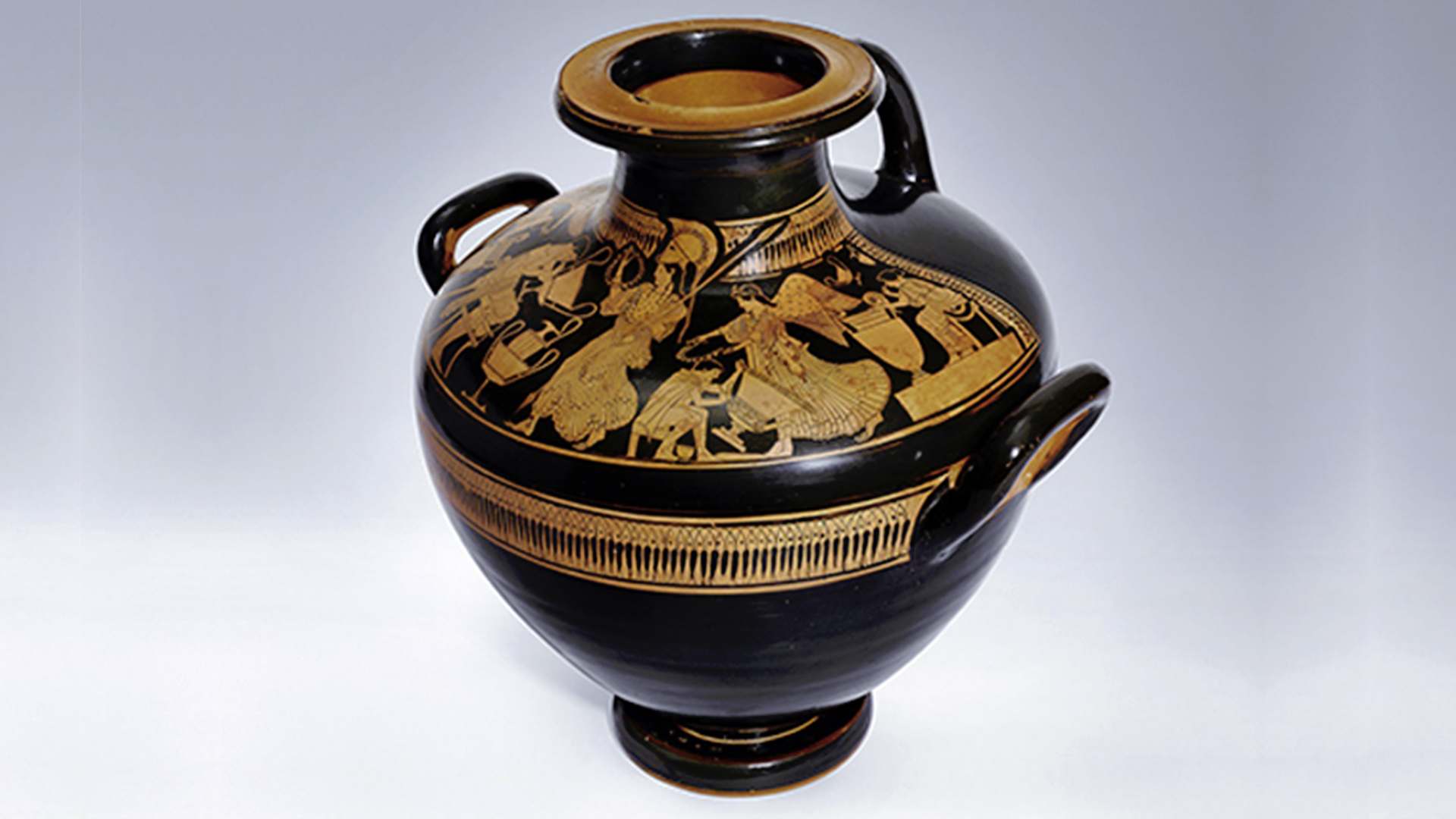The exhibition, curated by Fabrizio Paolucci, presents, for the first time to the public and in its entirety, the historical Caputi Collection belonging to Intesa Sanpaolo and consisting of more than 500 vases and other artefacts crafted in Athens, Apulia and Lucania between the 5th and 3rd centuries BC and discovered in Ruvo di Puglia, a town in the province of Bari which played a major political, economic and cultural role in Magna Graecia. The collection of Attic and Magna Graecia vases includes artefacts that likely belonged to a single necropolis in ancient Ruvo di Puglia, located in the Province of Bari. The pottery, which provides a valuable insight into the art and culture of Magna Graecia, were either made between the 6th and 3rd centuries BC in workshops in southern Italy – Apulia and Lucania – or imported from Athens. They were prestigious grave goods playing an important role in the burial practices adopted by the aristocracy of Apulia. Most of them were used to store food, liquids and unguents; they combine the practical with the exquisitely artistic, decorated as they are with figurative paintings in red or black. The collection’s crowning jewel is the Attic kalpis by the Leningrad Painter (5th century BC): its decoration depicts a ceramics workshop, with craftsmen and a young woman painting the pottery. The collection was formed on the initiative of archdeacon Giuseppe Caputi, whose civic engagement in 19th-century Ruvo was well known and who, from the 1830s onwards, began collecting and preserving the painted vases that had been unearthed in his own estates.
Attic and Magna Graecia pottery
Exhibition path "La Magna Grecia"
The new display brings the artefacts closer to the context in which they were created and their cultural backdrop, and places them near the collections of the MANN (National Archaeological Museum of Naples), a significant portion of which includes finds discovered during excavations in Ruvo di Puglia.
The ceramics exhibition also features a rotating display of specific artefacts selected as part of a number of academic projects that invite comparisons with valuable pieces on loan from the MANN and other museums in Italy and abroad.
Discover all the artworks of the "La Magna Grecia" exhibition path
Install the Gallerie d'Italia app on your smartphone:
The app has also been designed for interaction with the museum areas and installations, thanks to beacon technology which allows the users to position themselves inside the museum (indoor positioning), receive news about museum events, and find their way around the underground areas. Furthermore, by scanning the QR codes scattered around the exhibition, it is possible to see the information cards of the works.


